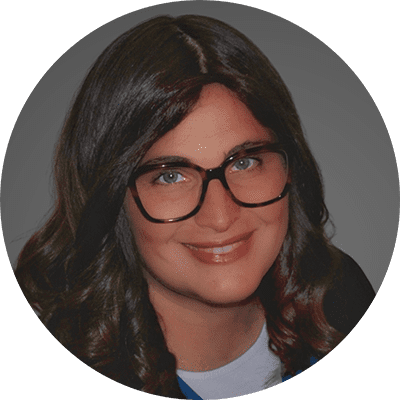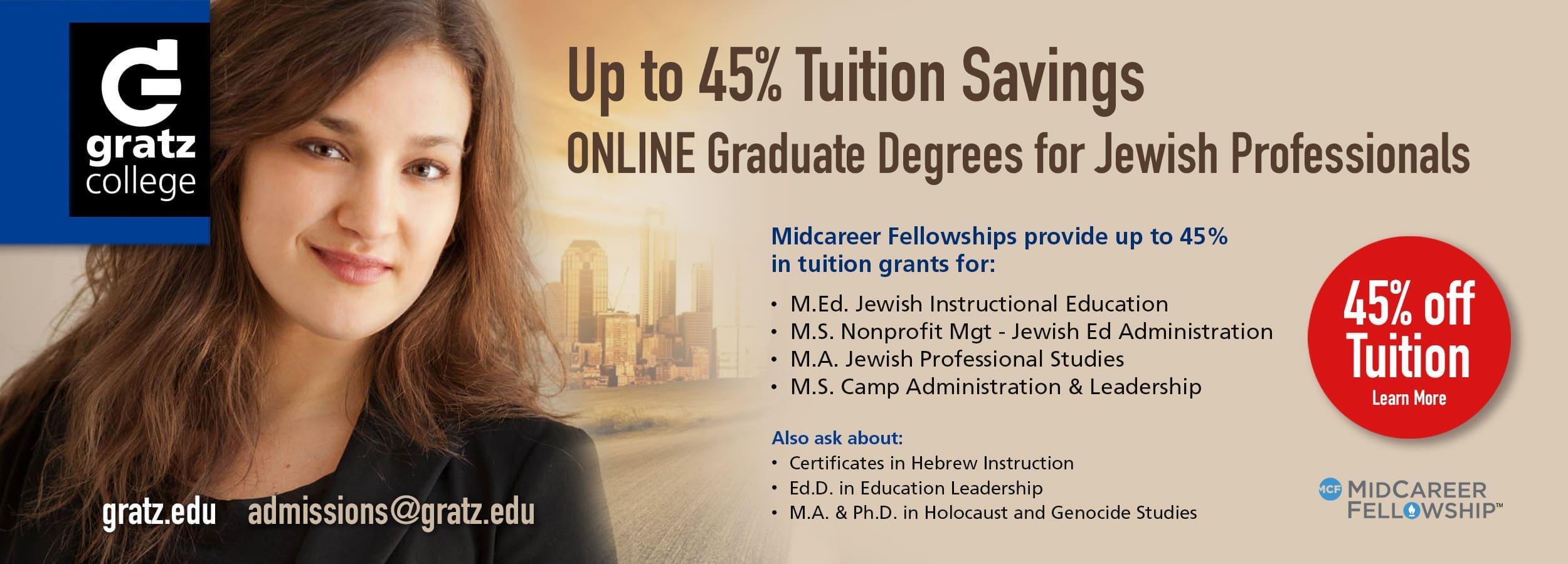Teacher Rounds to Build a Learning Community

Pesha Kletenik is Head of School at Manhattan Day School (NY). She was formerly Principal of Yeshiva Har Torah in Queens where she worked with a team to run teacher rounds. She received her Ed. D. from the Learning and Teaching Program at Hofstra University and an MS in School Psychology from the Touro Graduate School of Education and Psychology.
Introduction
This was the moment it became clear that teacher rounds had been a success: a group of teachers on rounds had just observed a second-grade literacy lesson and were offering feedback to their colleague. One teacher commented on how she really liked a technique the teacher had used. Without even a pause, the teacher who had been observed said, “Oh, I learned that from the third grade teacher when I observed her last time during rounds.” Teacher rounds had been implemented as a way to improve teacher morale, but had led to much more, including improved practice and shared conversation about instruction.
Teacher rounds, modeled after the familiar medical teaching rounds in hospitals, are when a group of teachers observe a colleague teaching and offer feedback following the observation. According to Troen and her colleagues, what distinguishes rounds from other forms of professional development is that, “it occurs in the context of teaching and learning… provides a shared experience as a basis for conversation… and it brings to bear… the different perspectives and expertise of different participants in the reflection process.” This robust form of professional development elevates pedagogy and cultivates a learning community among faculty. This is particularly important in light of the observation by City and her colleagues that medical rounds are effective because they create a common discipline and purpose among practitioners, something sorely needed in education in which teachers’ work is often highly individualized without a shared language regarding practice or agreed upon pedagogy.
We instituted teacher rounds at Yeshiva Har Torah (Queens, NY) and have been running them for seven years. Below is a description of how we introduced and conducted the practice, which we found to be a very powerful form of professional development and builder of teacher morale.
Preparing to Implement
The very first step to implementing teacher rounds was facilitating thoughtful professional development on the subject. Teachers were introduced to the concept, viewed a video, and participated in discussions. We found that the reflection after the video helped teachers to become more comfortable with the idea and generated excitement about it. Teachers also appreciated the repeated emphasis on the purpose of rounds as growth, not evaluation, and were reassured by our commitment that nothing observed by school leaders would be entered into a teacher’s record. As we planned to implement the rounds we introduced norms for observing and commenting on colleagues’ practices as well as a shared rubric for observation notes.
On an administrative level, it was important that the school provide coverage for the classes missed. It was also important that teachers be relieved of technical issues such as scheduling, coordinating, sending out reminders, and even making sure that observers had clipboards and pens to record their observations. This freed the teachers to focus on their pedagogical work (as opposed to administration) and sent a clear message of the importance the school leadership placed on this initiative.
We wanted to begin with observations of teachers who volunteered to be observed. The greatest challenge in implementing teacher rounds was making teachers feel comfortable being on stage in front of colleagues. What helped us get past this hump was to have teachers who were also instructional leaders, such as curriculum coordinators, be observed first. Additionally, we tried to schedule observations at times the observed teachers requested and in subject areas that they felt confident. For example, teachers who were very skilled in running reading groups were observed during those times, while others, who excelled at transitions, were observed then. We even recommended teachers observe their colleague who excelled in supervision of recess, using it to assist students with social dynamics.
One of the things to which we paid special attention was the composition of the groups of teachers who would be observing each other. We decided to create heterogenous groups including teachers from different grades, expertise, and departments. The more varied the group, the more robust the conversation and learning experience was. This had an additional benefit of bringing together groups of people who do not regularly have opportunities to interact, not to mention to learn from one another. Mixing early childhood, special education, Judaic studies, and general studies teachers brought a variety of perspectives and insights to the fore.
We avoided observing classrooms in which the teachers were having difficulty maintaining basic discipline.
The Observation Cycle
Our teacher rounds include the following steps:
- The teacher being observed identifies a problem of practice and presents their lesson plan to the observing group. The group is permitted to ask clarification questions. This usually lasts about fifteen minutes, and does not necessarily take place on the same day as the observation.
- The observing group reviews the norms for visiting the classroom. This is led by the facilitator.
- The observation takes place. We found that twenty minutes is sufficient time to get a sense of a classroom, but not too long to be disruptive.
- The teacher and the observers participate in a debrief discussion. Forty-five minutes is allotted for this, and we think it essential that this happens on the same day as the observation.
The Observation
It was important to us that the observation interfere as little as possible with the teacher’s classroom. Toward that end we developed a series of basic norms to ensure that the observers are as unintrusive as possible. These norms included:
- Observers remain silent during the lesson.
- Observers remain in the classroom during the duration of the observation.
- Observers may circulate when students are working but should remain on the side when the teacher is engaging in direct instruction.
- Observers can ask students questions when they are working but should refrain from teaching or assisting students.
- Observers should take notes on student actions.
- Observers should record examples of how students construct their understanding.
- Observers are not to bring any food or beverages to the observation.
- Observers leave the room together upon the pre-arranged signal of the facilitator.
The observations were recorded using a simple rubric, including categories such as I liked; I noticed; I wondered; I learned. These notes helped to guide the debrief conversation.
Debrief Conversation
We insisted that the debrief take place on the same day as the observation since the observations are fresh in the eyes of the observers and the teacher who was observed may be anxious about the thoughts and feedback of their peers.
The conversation opened with the facilitator thanking the teacher and reminding the group that the purpose of rounds is to learn from one another, not to critique. In turn, each observer made a single comment at a time, continuing until everyone shared all of their feedback. This ensured equity of voice and kept everyone engaged in the dialogue. The teacher who was observed listened to the feedback and took notes but did not speak or engage in dialogue. This allowed the teacher to reflect on what was being said and organize his or her thoughts, and helped create a safe environment for both the observed and the observers. When the facilitator was a school leader they refrained from commenting until everyone else had spoken and only commented if a critical instructional point had not been made. Facilitators interfered only when a comment was inappropriate.
Following all of the comments, the teacher who was observed had the opportunity to reply to any questions and address any feedback they wished. One of the challenges we faced was that, despite our best efforts, teachers who were being observed and critiqued sometimes tended to be defensive—a reflex which hinders the very learning the process is designed to avoid. There were times where some pre-debrief counseling helped to prevent or moderate that response. As time went on and the group experienced mutual support and collegiality, that defensiveness began to wane. We also found that it made teachers feel good about being observed when they received a thank you note or positive feedback on the same day as the round.
Conclusion
Teacher rounds helped us create community and provide a sense of meaningful growth for our faculty. Despite the initial discomfort, it helped create a shared vision of instruction and a community of learners, increasing teacher morale. Teachers who feel good about their environment, about their teaching, and about their own growth are more likely to remain teachers.



Pesha Kletenik is Head of School at Manhattan Day School (NY). She was formerly Principal of Yeshiva Har Torah in Queens where she worked with a team to run teacher rounds. She received her Ed. D. from the Learning and Teaching Program at Hofstra University and an MS in School Psychology from the Touro Graduate School of Education and Psychology.
Reach 10,000 Jewish educational professionals. Advertise in the upcoming issue of Jewish Educational Leadership.





